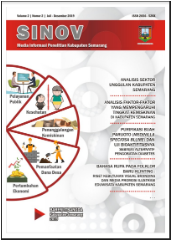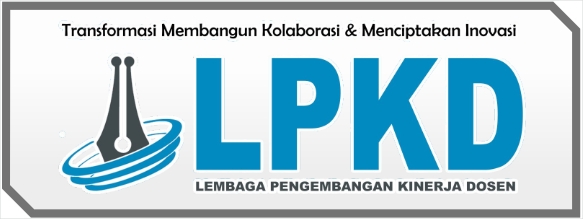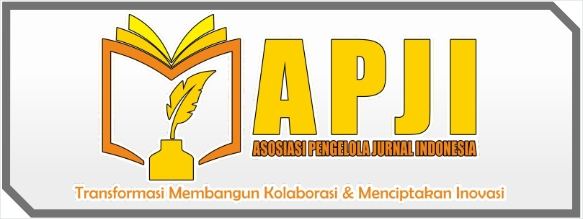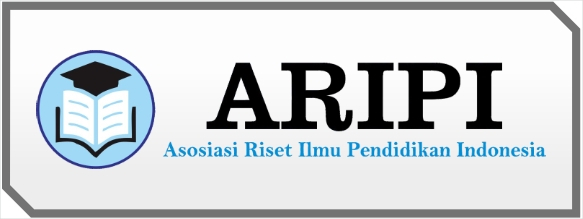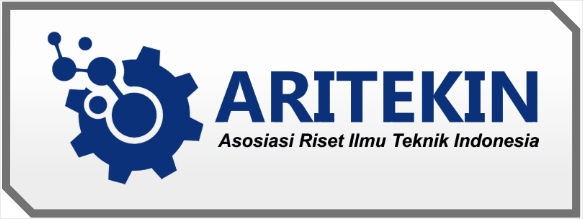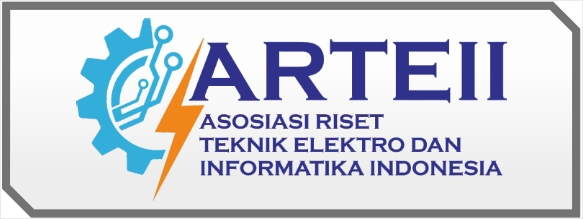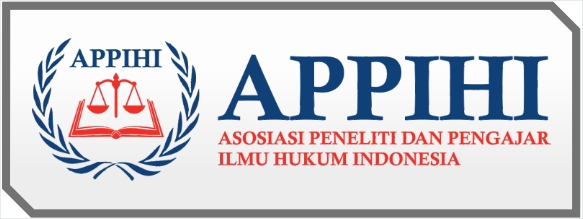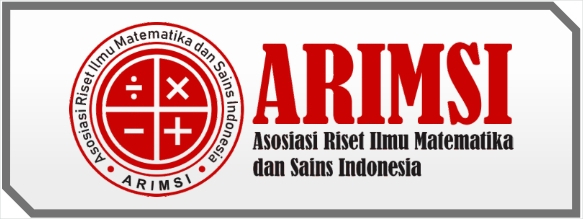Pengembangan Kawasan Pedesaan dalam Mempertahankan Fungsi Produksi Pertanian Kabupaten Semarang
DOI:
https://doi.org/10.55606/sinov.v7i1.851Keywords:
rural welfare, maintain rural areas roleAbstract
The implication of increasing agricultural production will increase the aggregate income of rural areas so that it will improve the welfare of rural communities. The recent impact of the pandemic which has been felt by all levels of society has opened many eyes to return to the village and develop their village. The characteristics of rural areas that are identical to agriculture have resulted in a rural area development strategy that has a very strategic role because it is a producer of natural resources, industrial raw materials, and labor. The aim of this study is to determine to what extent spatial planning is able to maintain the role of rural areas as providers of the primary needs of the population of a region. The strategies carried out are (1) strengthening the role of government and enforcement of spatial planning laws, (2) increasing productivity and diversification of agricultural products, (3) strengthening social capital of rural communities (4) strengthening agricultural and rural R&D and mastery of technology, (5) increasing cooperation between stakeholders and (6) increasing regional competitiveness.
Downloads
References
Aziiza, A. A., & Susanto, T. D. (2020). The smart village model for rural area (case study: Banyuwangi Regency). IOP Conference Series: Materials Science and Engineering, 722(1), 012011. IOP Publishing.
Cahyono, B., & Adhiatma, A. (2020). Peran modal sosial dalam peningkatan kesejahteraan masyarakat petani tembakau di Kabupaten Wonosobo. Conference in Business, Accounting, and Management (CBAM), 1(1), 131–144.
Diartho, H. C., Lestari, E. K., Yunitasari, D., Lutfi, A., & Muslihatinningsih, F. (2020). Perencanaan pengembangan kawasan perdesaan berbasis potensi di bagian selatan Provinsi Jawa Timur (Studi: Kabupaten Banyuwangi). Media Trend, 15(1), 62–73.
Fatah, L. (2006). Dinamika pembangunan pertanian dan perdesaan. Banjarbaru: Jurusan Sosek Fakultas Pertanian Universitas Lambung Mangkurat dan Pustaka Banua.
Giller, K. E., Delaune, T., Silva, J. V., Descheemaeker, K., Van De Ven, G., Schut, A. G., ... & van Ittersum, M. K. (2021). The future of farming: Who will produce our food? Food Security, 13(5), 1073–1099. https://doi.org/10.1007/s12571-021-01184-6
Izzati, M. F., & Wilopo, W. (2018). Implementasi triple helix dalam mendorong pertumbuhan industri kreatif di Kota Malang sebagai upaya peningkatan daya saing untuk menghadapi masyarakat ekonomi ASEAN. Jurnal Administrasi Bisnis, 55(1), 59–68.
Jurayevich, M. B., & Bulturbayevich, M. B. (2020). Attracting foreign investment in the agricultural economy. International Journal of Business, Law, and Education, 1(1), 1–3.
Kharisma, I. (2024). Implementasi konsep smart village di Desa Lerep, Kecamatan Ungaran Barat, Kabupaten Semarang (Tesis tidak dipublikasikan). Universitas Islam Sultan Agung Semarang.
Liu, X., & Zeng, F. (2022). Poverty reduction in China: Does the agricultural products circulation infrastructure matter in rural and urban areas? Agriculture, 12(8), 1208. https://doi.org/10.3390/agriculture12081208
Matei, A. I., & Iordache, L. (2016, May). Administrative capacity development for the modernisation of rural communities in Romania. In Proceedings of the 11th Edition of the International Conference "European Integration—Realities and Perspectives (pp. 137–144).
Rahayu, S., Rudiarto, I., & Pangi, P. (2015). Konversi lahan pertanian pada koridor jalan Solo–Yogyakarta di Kabupaten Klaten. Geoplanning: Journal of Geomatics and Planning, 2(1), 22–29. https://doi.org/10.14710/geoplanning.2.1.22-29
Sayoga, A. A. H. E. S. (2008). Pengaruh perubahan teknologi terhadap perkembangan klaster padi organik Kabupaten Semarang (Tugas akhir tidak dipublikasikan). Universitas Diponegoro.
Sayoga, A. A. H. E. (2020). Strategi peningkatan daya saing ekonomi Kecamatan Jambu melalui pengembangan potensi agrobisnis. Media Informasi Penelitian Kabupaten Semarang, 2(1), 100–115.
Sayoga, A. A. H. E. (2022). Cashew agribusiness value chain study in Wonogiri Regency. Eko-Regional: Jurnal Pembangunan Ekonomi Wilayah, 17(2), 105–117.
Somwanshi, R., Shindepatil, U., Tule, D., Mankar, A., Ingle, N., Rajamanya, G. B. D. V., & Deshmukh, A. (2016). Study and development of village as a smart village. International Journal of Scientific & Engineering Research, 7(6), 395–408.
Syafa’at, N., Mardianto, S., & Simatupang, P. (2017). Dinamika indikator ekonomi makro sektor pertanian dan kesejahteraan petani. http://repository.pertanian.go.id/bitstream/handle/123456789/4441/DINAMIKA%20INDIKATOR%20EKONOMI%20MAKRO%20SEKTOR%20PERTANIAN%20DAN%20KESEJAHTERAAN%20PETANI.pdf?sequence=1
Tarigan, R. (2004). Perencanaan pembangunan wilayah. Jakarta: Bumi Aksara.
Undang-Undang Republik Indonesia Nomor 23 Tahun 2007 tentang Penataan Ruang.
Undang-Undang Republik Indonesia Nomor 41 Tahun 2009 tentang Perlindungan Lahan Pertanian Pangan Berkelanjutan.
VOI. (n.d.). Kemendes targets next year all Indonesian villages transform to digital villages. https://voi.id/en/news/438505
Yuliani, E., & Karmilah, M. (2024). Initiation of smart village development in Lerep tourism village. Journal of Advanced Civil and Environmental Engineering, 7(1), 91–97. https://doi.org/10.30659/jacee.7.1.91-97
Downloads
Published
How to Cite
Issue
Section
License
Copyright (c) 2025 Media Informasi Penelitian Kabupaten Semarang

This work is licensed under a Creative Commons Attribution-ShareAlike 4.0 International License.

